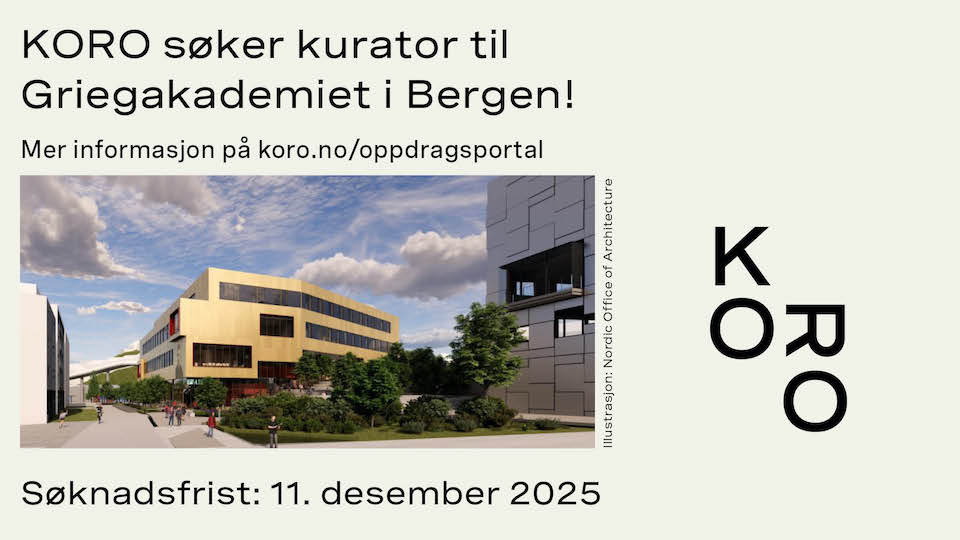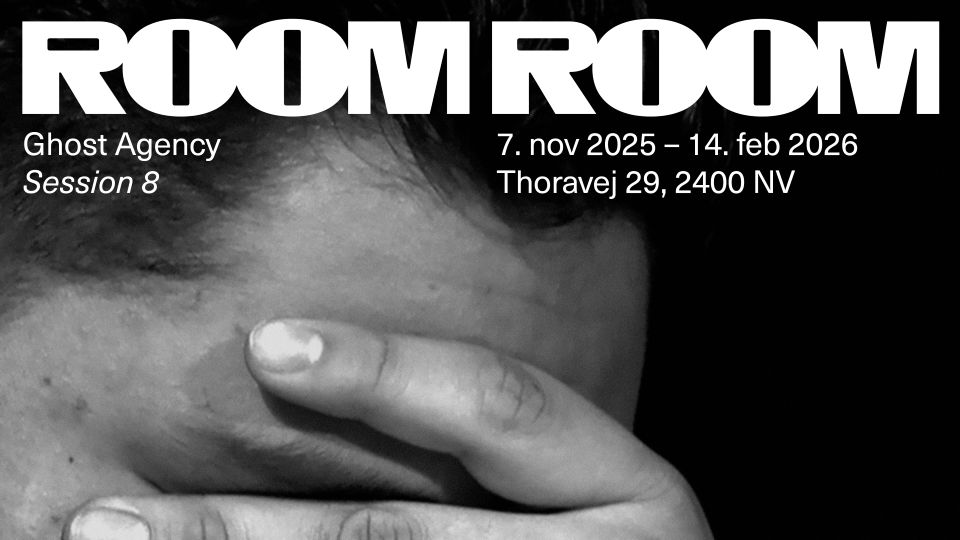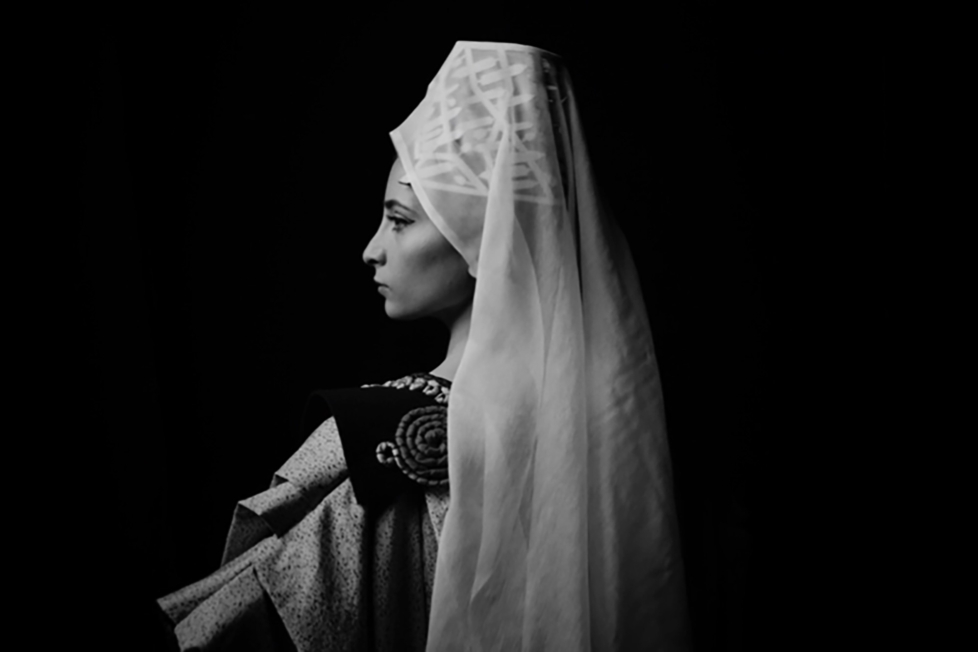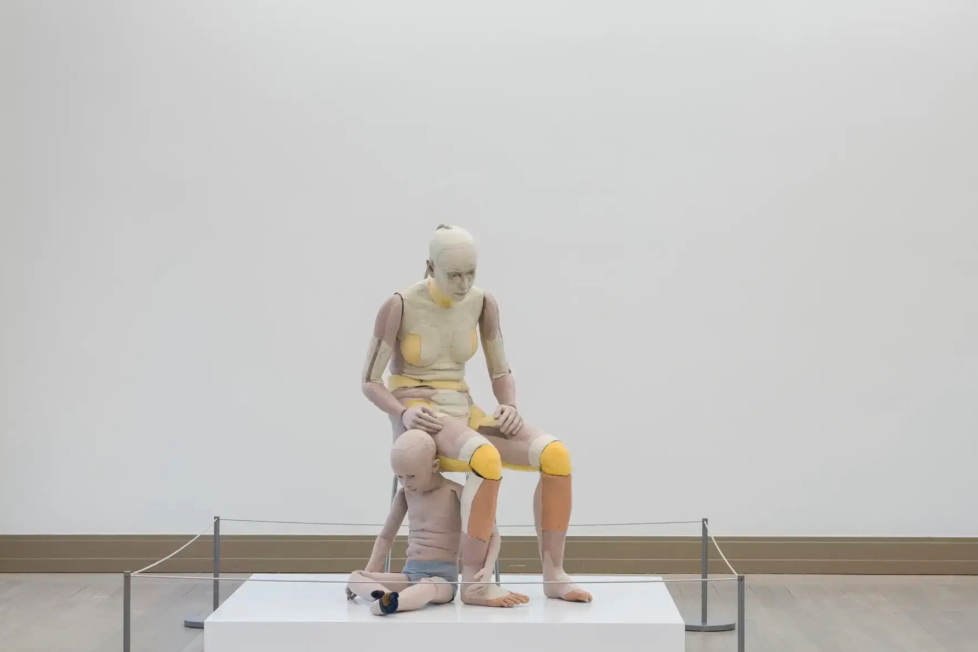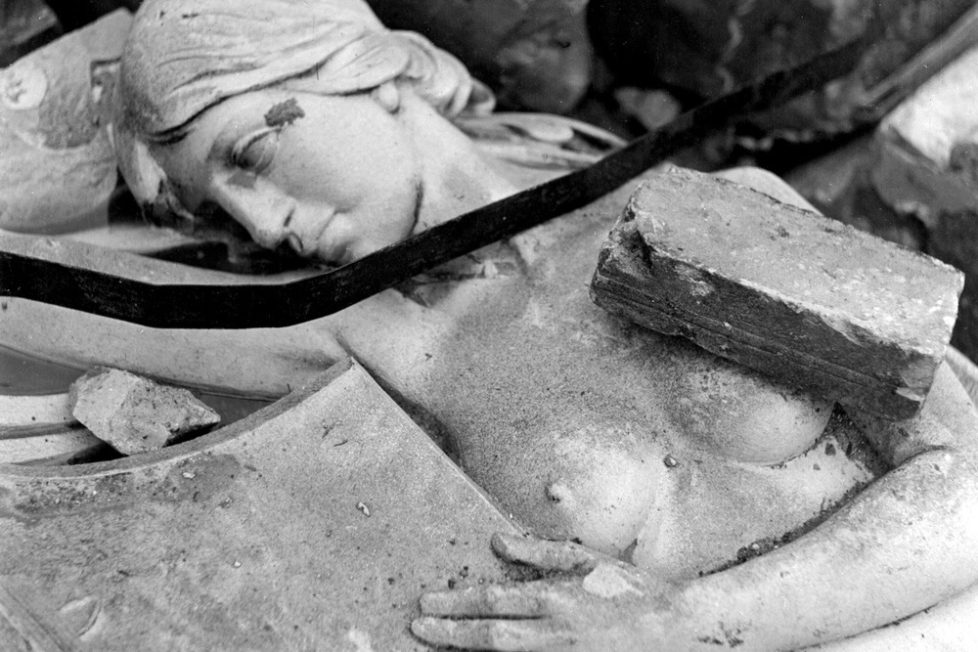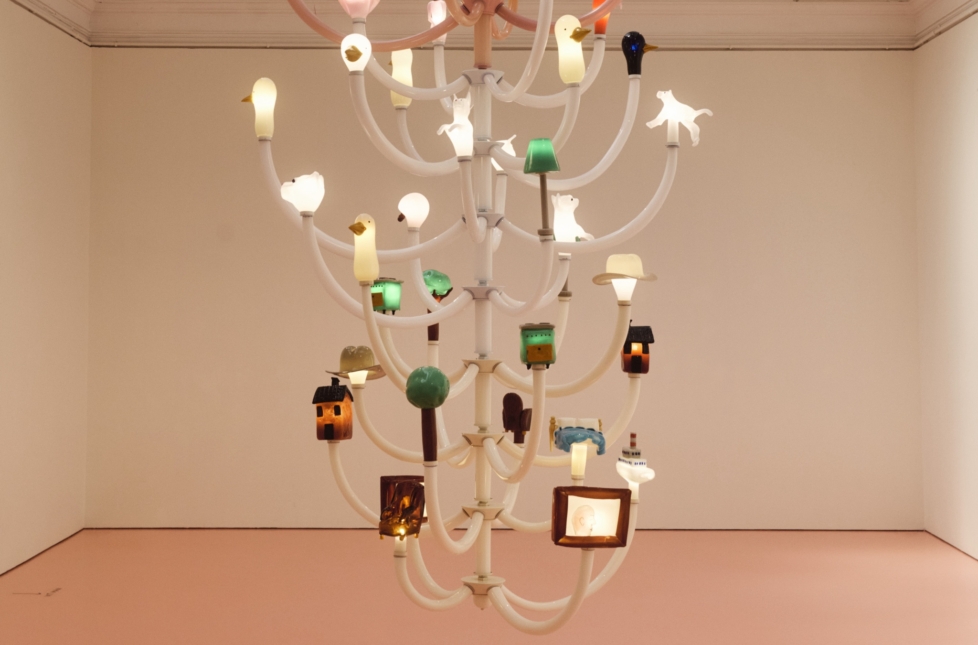
Indigenous Histories at Kode is a major initiative launched by the Museu de Arte de São Paulo (MASP) and carried out by a large international team of twelve curators, including Norwegian-Sámi curators Irene Snarby and Susanne Hætta. Displaying great diversity, the selection of works forms a rich picture of the featured Indigenous cultures from all over the world; cultures where art and activism go hand in hand in the face of forces that threaten their ways of life. The exhibition is arranged geographically with separate curators for each section, dedicated respectively to Sápmi, Canada, New Zealand, Peru, Mexico, Brazil, and Australia. In addition, a separate section is devoted to Indigenous activism in a global perspective. It is an engaging and consistently solid exhibition, but I am not entirely sure what it is doing at the crisis-stricken Kode in Bergen. More on that later.
My first port of call was the Peruvian section, where a large part of the floor is covered in red sand on which stand three hundred tiny acrylic figures (Antonio Paucar, Pedro Gonzáles Paucar, and Javier Gonzáles Paucar, Homage to the Martyrs of the Battle of Azapampa 1820, 2021). What looks abstract and quite beautiful from a distance turns out to be a battlefield when viewed up close. Amidst cacti and a couple of donkeys, torn-off limbs are strewn along rows of dead women and men dressed in simple peasant clothes. The few who are still standing are carrying the bodies away. The scene depicts the bloody battle fought by the Indigenous people of the Andes against the Spanish in 1820, an important event in the Peruvian War of Independence. Nevertheless, their contribution to this long-standing struggle has been largely written out of the national narrative, where the victory is mainly attributed to the white settler population. As both the title and catalogue entry about the work make clear, Homage seeks to re-inscribe the fallen into the narrative.
The grief and pain expressed by the work is highly contagious and transmits an acute sense of injustice to the viewer. So when I raised my eyes and looked around, I needed a moment to fully take in the strange mode of presentation that pervades the rest of the Peruvian section. Here, several of the pictures are mounted upside down on the walls. Was I seeing things right? I found a wall text that explains the strange approach by referring to the concept of “pachakuti,” which denotes the social and cultural upheavals that took place when Spain invaded the ‘New World’, as well as the subsequent cultural balancing act that Latin America’s Indigenous Peoples have had to perform ever since. If I understood it correctly, the idea is that because we viewers cannot see the world from the perspective of the Indigenous Peoples of the Andes, we should not be allowed to imagine that we are are facing these works with a neutral gaze. A little on the nose, perhaps, but I was happy to play along.

In terms of the works selected, the section runs the gamut from contemporary art to ancient ceramics from 200 BCE, with a clear emphasis on portraiture. I was particularly taken by a series of identification photographs of miners (Sebastián Rodríguez, Identification Portrait Mina Morococha, 1928–1968). Each person is depicted in black and white, facing forwards with a four-digit number above their head. The sterile, seemingly neutral manner of presentation, perpetuated today in passport portraits, forms an image of the workers as pure bodies, components of a workforce – equipped with ID, but without identity.
Next to it hangs a series of portraits from the same archive, in this case printed on oxidised bronze plates treated with acid (Alfredo Marquez, Muruk’ocha (Stained Lake), 2012). According to the catalogue entry, the process was used to lighten the subject’s skin in pictures – a popular effect because it could advance one’s social status in a society where being as Spanish as possible was an advantage. Another series of images depicts women and children wearing traditional Peruvian hats and clothing. They look sad, holding up photographs of missing family members. Even when taken in demeaning contexts, photographs can nevertheless have value as mementoes and proof of the depicted person’s existence. At the same time, the series points to how the rule of law fails Latin American Indigenous Peoples, among whom a disproportionately large number of unsolved disappearances occur.
This particularly applies to young women, also the subject of Venuca Evanán’s two paintings Minor Injuries (2021) in which two battered women are depicted head-on. The use of colour and style makes the portrayals strikingly personal – even when viewed upside down. The intimacy and sheer humanity that radiates from these portraits forms a stark contrast to Cristóbal Lozano’s so-called “casta” (caste) paintings on the opposite wall: a series of typological representations of different social classes, ranked according to their relative ratio of Spanish blood. According to the wall label, such portraits, which were popular among the aristocracy of Lima during the 18th century, were closely associated with a racial policy intended to gradually dilute the native population with Spanish genes. In contrast to the rest of the exhibition, these paintings are mounted the right way up, giving them a completely different impact compared to the other Peruvian works.
While the conceit of turning the works upside down may feel rather corny, the historical juxtapositions in the Peruvian department excellently demonstrate how the artist’s position greatly affects the way a story is told. This forms a useful basis for the narrative that unfolds as I continued on, first to the Mexican, then the Brazilian section – both equally colourful presentations with clear political dimensions. A little gem that I spent some time finding is Frida Kahlo’s My Dress Hangs There (1933). At the centre of the small oil painting, a typical Kahlo dress hangs from a rope strung between a toilet bowl and a trophy placed on separate pedestals. In the far distance, the Statue of Liberty stands out amid a jumble of skyscrapers, steamships, churches, petrol stations, factory chimneys, and other symbols of Western culture current at the time. In the foreground are large crowds that include soldiers, protesters, and more indistinct groups. The contrast between the surroundings and the dress makes for a powerful snapshot that captures how alien the Mexican painter must have felt in American industrial society.

Zooming out a little, Kahlo is in good company with other activist artists such as Francisco Toledo (1940–2019). This also holds true in the other sections, all of which paint a rich picture of creativity and resilience in the face of threats to the foundations of one’s culture and way of life. In the part of the exhibition devoted to activism, the local and national stories are linked up to form a global narrative about how ecological, social, and political struggles – especially those concerning the right to political representation – are common to many Indigenous groups around the world. In the film Tidens Struktur (The Structure of Time, 2023), the Cherani Collective takes up the subject of missing women in Mexico and links the disappearances to illegal logging and corruption. Additional perspectives are provided by the Zapatistas in Mexico, the fight for Indigenous people’s right to vote in Brazil, and not least the current battles against the Norwegian state in Sápmi, represented by, among others, Máret Anne Sara and the artist collective Suophanterror.
With 175 artists and more than 270 works featured in one exhibition, the diversity of voices could easily come across as an overwhelming cacophony, but the overall experience is impressively orderly, allowing each individual work to breathe without feeling sparse. Indigenous Histories presents an exciting narrative about peoples and cultures whose own histories have been disrupted and radically reformulated by European colonialism. At the same time, the exhibition can be interpreted as part of a wider-ranging decolonial project that collects and shares knowledge with the aim of challenging established narratives about people, countries, and cultures; stories that have mostly been told by representatives of colonial powers. In a museum context, such collaborations can be fertile ground for further efforts to challenge the canon and establish a more inclusive and pluralistic art histoy.
Kode describes Indigenous Histories as a “landmark exhibition in the Norwegian context.” Despite these big words from a museum seemingly trying to position itself as a trailblazer within a field in which it has so far shown little interest, it is unclear what Kode’s contribution actually consists of – apart from importing and housing the exhibition. The section dedicated to Sápmi is curated by guest curator Irene Snarby, who, in line with the exhibition’s overall tenor, has selected works that examine Sámi traditions and mythology through modern modes of expression while at the same time challenging stereotypical ideas about Sámi culture. The most striking work is Finnish-Sámi Outi Pieski’s installation Crossing Paths (2014). Hundreds of long tassels like those found on Sámi shawls hang from a wooden structure in the ceiling, forming a large and airy three-dimensional image in the middle of the room. I thought I could see sun, snow, and mountains there, but the work can also be appreciated for its purely meditative qualities.
Pieski is in good company with several well-known Sámi artists, including Britta Marakatt-Labba, Alf Magne Salo, Gjert Rognli, Joar Nango, and Marja Helander. Also included is a woodcut by John Andreas Savio (Gánda ja niedia, ca. 1925–35), placed inside a frame of brown reindeer skin made by Raisa Porsanger and Márja Karlsen (Når man viser frem det som er blitt skjult / When you show what has been hidden, 2021). Right next to it is another reindeer skin frame, this one a deep pink with large bright pink tufts of fur (Raisa Porsanger, Å skjule i det åpne / Hide in plain sight, 2021). It frames a Sophus Tromholt photograph depicting a Sámi mother with two daughters, all three dressed in woollen garments with beautifully decorated hats and mittens (Elen Clementsdatter with daughters, Kautokeino, 1882–1883).

The frames themselves are pretty cool, but I still struggle with this juxtaposition. With the exception of a wall label that encourages us to admire the symbolism and craftsmanship of the aforementioned mittens, nothing is said about the two works which the framing invites us to see in a new light. Sámi graphic artist Savio is placed side by side with the Danish-Norwegian researcher Sophus Tromholt without informing us about what connects or possibly separates them. While the former was an artist who lived and worked in Sápmi, the latter was a scholar who travelled from Bergen to Sámi areas in 1883–84 to photograph the northern lights (which he failed at). Over the course of his journey, he took a number of photographs of Sámi people which have subsequently been hailed for their warm and personal portrayals, a vivid contrast to the typical ethnographic portraits of the time. The photographs have even been included in UNESCO’s Memory of the World list. Even so, Tromholt was undoubtedly part of a colonial apparatus alongside other scientists, tourists, and travellers to the ‘exotic’ north. In other words, renegotiating the Tromholt collection is entirely called for, but the exhibition does not tell us why.
Other works also suffer from insufficient contextualisation, including Joar Nango and Katarina Spik Skum’s textile tent Rakkas III (2022). The wall label very briefly informs us that the motifs on the textile are taken from the Norwegian pastor Knud Leem’s book on “Lapps” from 1767, but I needed to consult the extensive catalogue to learn more about Leem’s wildly fanciful representations and how the artwork can be understood as a comment on misrepresentations and appropriation of Sámi culture. Given that the vast exhibition contains only two works from Kode’s own collection, I would expect the museum to at least contextualise them well, but in this regard it disappoints. This makes me wonder what Kode actually wants to achieve here.
Considering the dire financial straits currently afflicting Kode, it is difficult to assess Indigenous Histories without also asking whether prioritising this exhibition was the right choice. Even without knowing the exact figures, it is obvious that the exhibition is a hugely expensive undertaking. In a recent article published by the newspaper Bergens Tidende, Kode justified its decision by pointing to a vision of “bringing the world to Bergen and Bergen to the world” and stating its wish to use the museum’s position “to enter the major league in a way that belies its size.” Granted, Kode does bring the world to Bergen with Indigenous Histories. But what does the museum bring to the world when it barely uses its own collection or involve its own employees? Despite its many strong points, the exhibition comes across as difficult to defend, both as a short-term and long-term investment. Rather than actually playing in the major league, Kode is a spectator who has paid to bring the match to its home turf without having qualified for this distinction through collecting activities and knowledge building.






